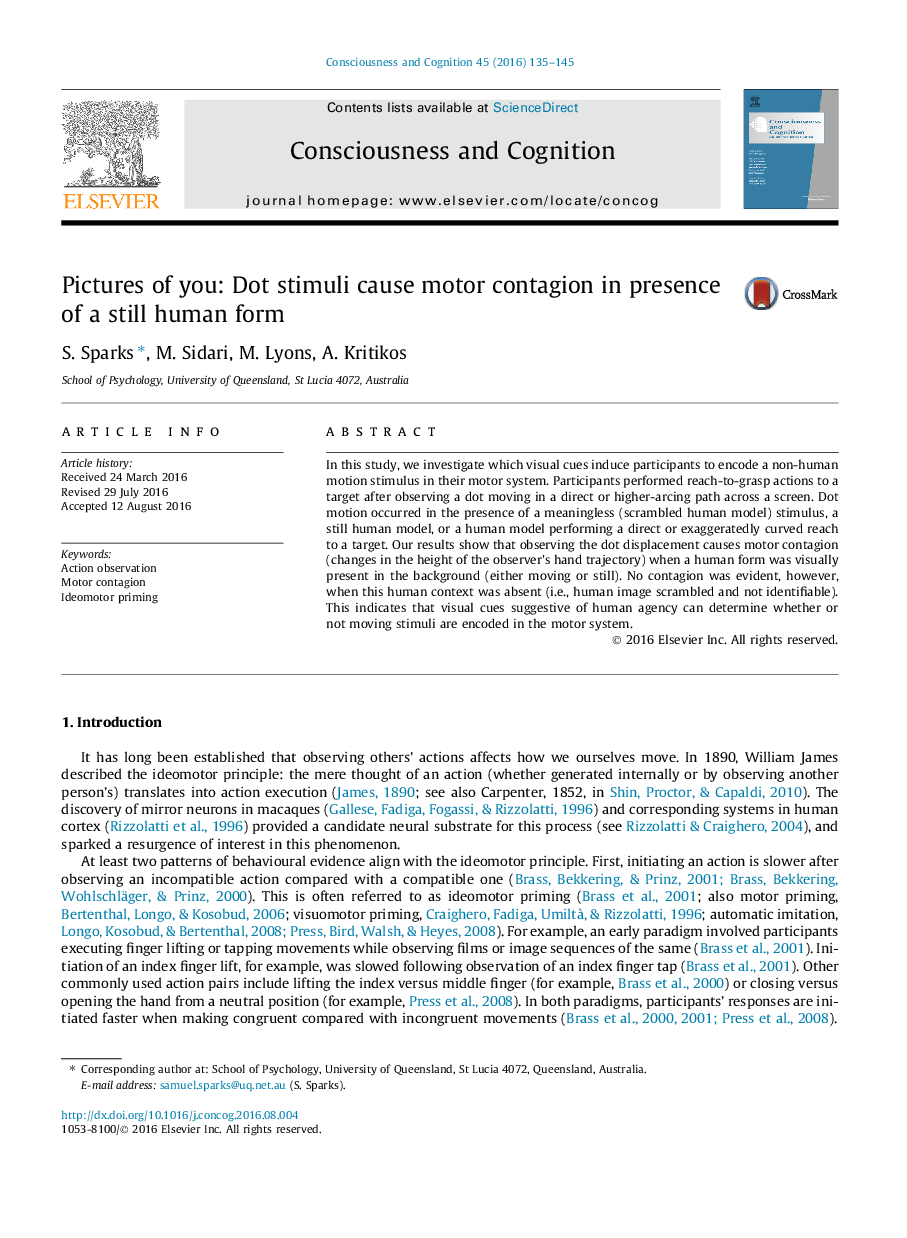| Article ID | Journal | Published Year | Pages | File Type |
|---|---|---|---|---|
| 927512 | Consciousness and Cognition | 2016 | 11 Pages |
•Visual presence of human form modulates motor contagion (MC) from moving dots.•MC occurs when human form is present in the background and either moving or still.•No MC occurs when a human form is absent.•A visual human form serves as a cue to agency when the stimulus is ambiguous.
In this study, we investigate which visual cues induce participants to encode a non-human motion stimulus in their motor system. Participants performed reach-to-grasp actions to a target after observing a dot moving in a direct or higher-arcing path across a screen. Dot motion occurred in the presence of a meaningless (scrambled human model) stimulus, a still human model, or a human model performing a direct or exaggeratedly curved reach to a target. Our results show that observing the dot displacement causes motor contagion (changes in the height of the observer’s hand trajectory) when a human form was visually present in the background (either moving or still). No contagion was evident, however, when this human context was absent (i.e., human image scrambled and not identifiable). This indicates that visual cues suggestive of human agency can determine whether or not moving stimuli are encoded in the motor system.
Graphical abstractFigure optionsDownload full-size imageDownload as PowerPoint slide
